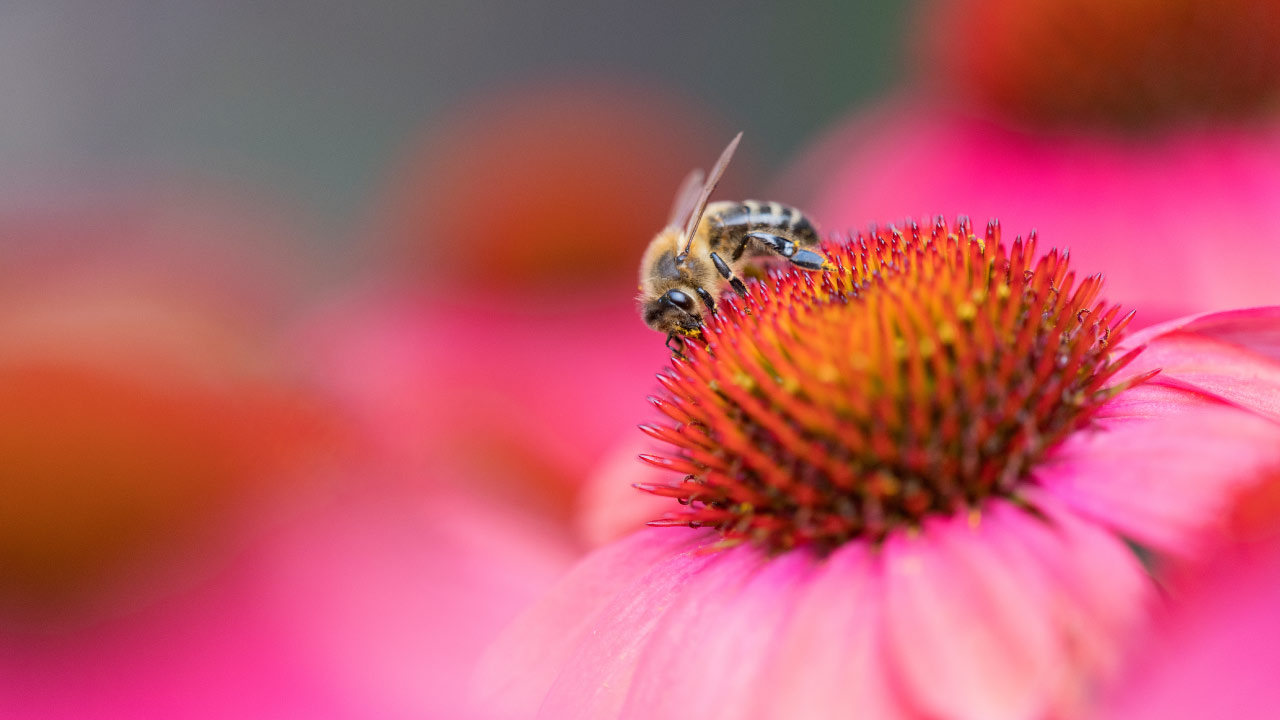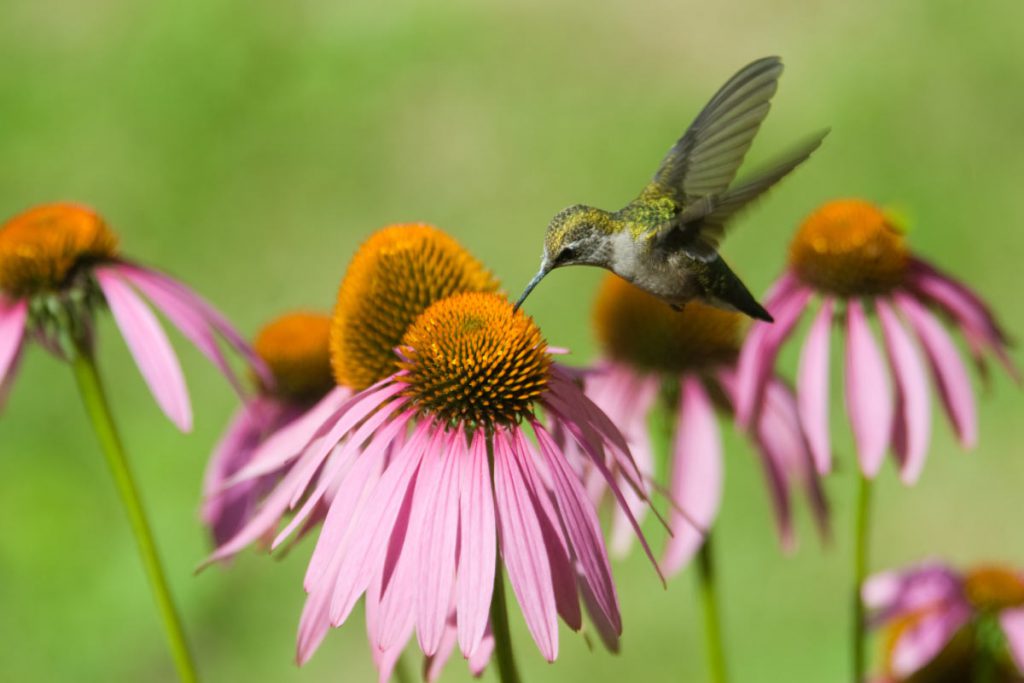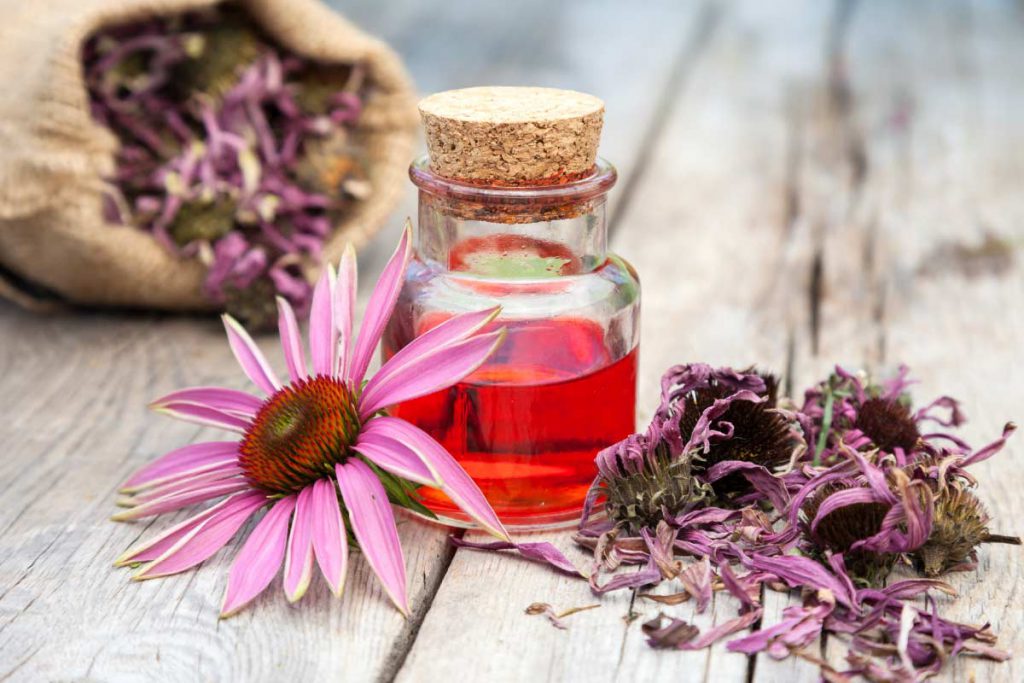
Exceptionally Extraordinary Echinacea
April 15, 2022
If you’ve traveled through the eastern or central part of the U.S., chances are you’ve noticed a pretty, purple daisy-like flower. That’s echinacea.
It’s native to North America east of the Rockies and grows in prairies and open, wooded areas. The reason it looks like a daisy is because it belongs to the daisy family of plants. Although it looks like a flower, it’s commonly classified as an herb, and is one of the most popular herbs in America today. Maybe you’ve even taken it yourself, but how much do you really know about it? Read on to learn more about this exceptionally, extraordinary herb!
In This Healthy Insight:
- What is Echinacea?
- Echinacea History
- Types of Echinacea
- Uses of Echinacea
- What’s in Echinacea?
- Forms of Echinacea

What is Echinacea?
Echinacea, also known as coneflower, displays pink or purple petals, depending on the species. There are nine main species and some varieties can grow nearly 4 feet in height. At the center is a seed head (cone) that’s dark and prickly looking, resembling the spines of an angry hedgehog. Its name actually comes from the Greek word for hedgehog, echinos.
Other common names for echinacea include Purple coneflower, Tennessee coneflower.
Echinacea History
Native Americans used echinacea for over 400 years to treat infections and heal wounds or as a general cure-all. During the 18th and 19th centuries, it became widely adopted for the treatment of everything from venereal disease to respiratory issues. Once antibiotics were discovered in the 20th century, its popularity waned slightly, although it still remains one of the world’s most popular herbal remedies to shorten a cold or bolster immunity.
Echinacea and echinacea blends are extremely popular in Europe, especially Germany, where most of the scientific research on echinacea is conducted.
Types of Echinacea
There are nine commonly recognized species of Echinacea. The first three on the list below are the only types used in herbal remedies:
- E. angustifolia – narrow-leaf coneflower petals
- E. pallida – pale purple petals
- E. purpurea –eastern purple coneflower
- E. atrorubens – Topeka purple coneflower
- E. laevigata – smooth coneflower, smooth purple coneflower
- E. paradoxa – yellow coneflower, Bush’s purple coneflower
- E. sanguinea – sanguine purple coneflower
- E. simulata – wavyleaf purple coneflower
- E. tennesseensis – Tennessee coneflower

Uses of Echinacea
While scientific research is limited and results anecdotal, herbalists and echinacea fans prize it today for its ability to shorten the duration of the common cold or flu, lessen symptoms like a sore throat, cough or fever, to boost the immune system and to help the body fortify its natural defenses.
What’s in Echinacea?
Echinacea plants contain a complex mix of active constituents. Some of these compounds may have antimicrobial properties, while others may support the immune system in other ways.
Like many plants and herbs, echinacea contains phenols that work to manage the activity of certain enzymes and receptors. These enzymes, along with beneficial antioxidants, help protect plants from infections, and they may offer the same type of protection to the human body as well.
In addition, echinacea contains trace amounts of naturally occurring vitamin C, selenium, zinc, polysaccharides, alkamides, chlorogenic acid, cichoric acid, rosmarinic and more. These antioxidants may help defend your body against oxidative stress.
Forms of Echinacea
Both the plant’s upper parts and roots are used including its flowers, leaves, stem and root. All have a variety of phenolic compounds that benefit health. You can find echinacea in the following forms:
- Fresh herb
- Dried in a tea
- As a single dietary supplement in capsules, tablets, gummies, lozenges, syrups, liquid extracts
- Blended with other immune-boosting ingredients
- In a cream or lotion to apply to the skin
- In a soap
- Essential oil
- Seeds or a live plant
Want to learn more about this extraordinary herb? Check out our echinacea line now.



